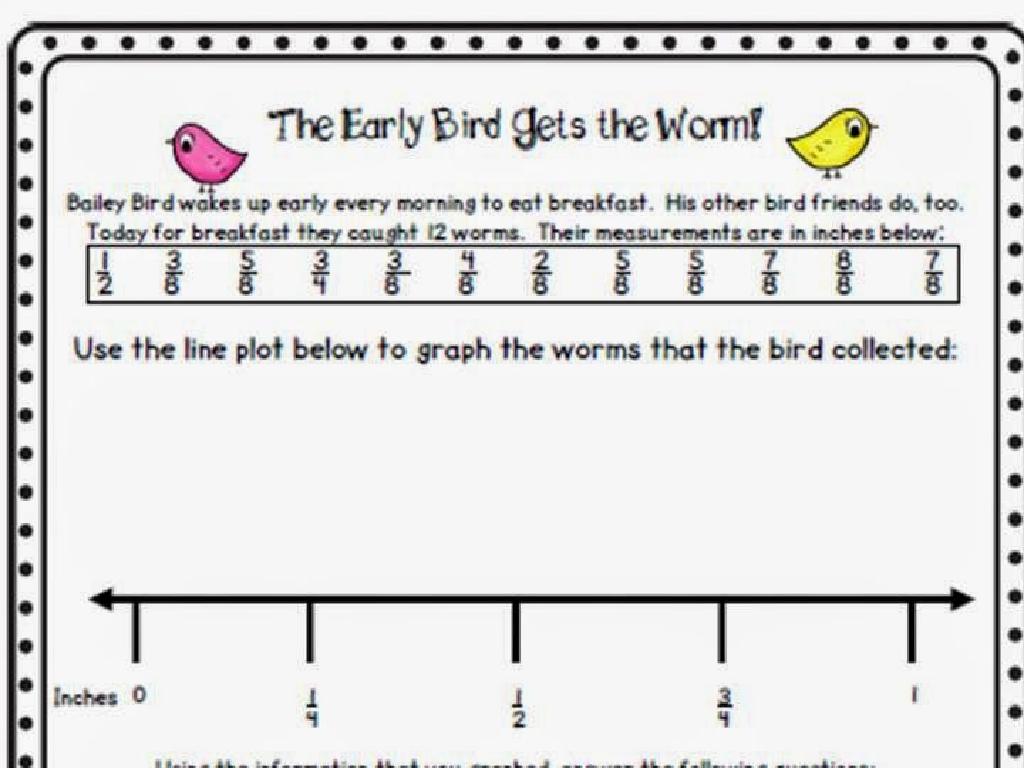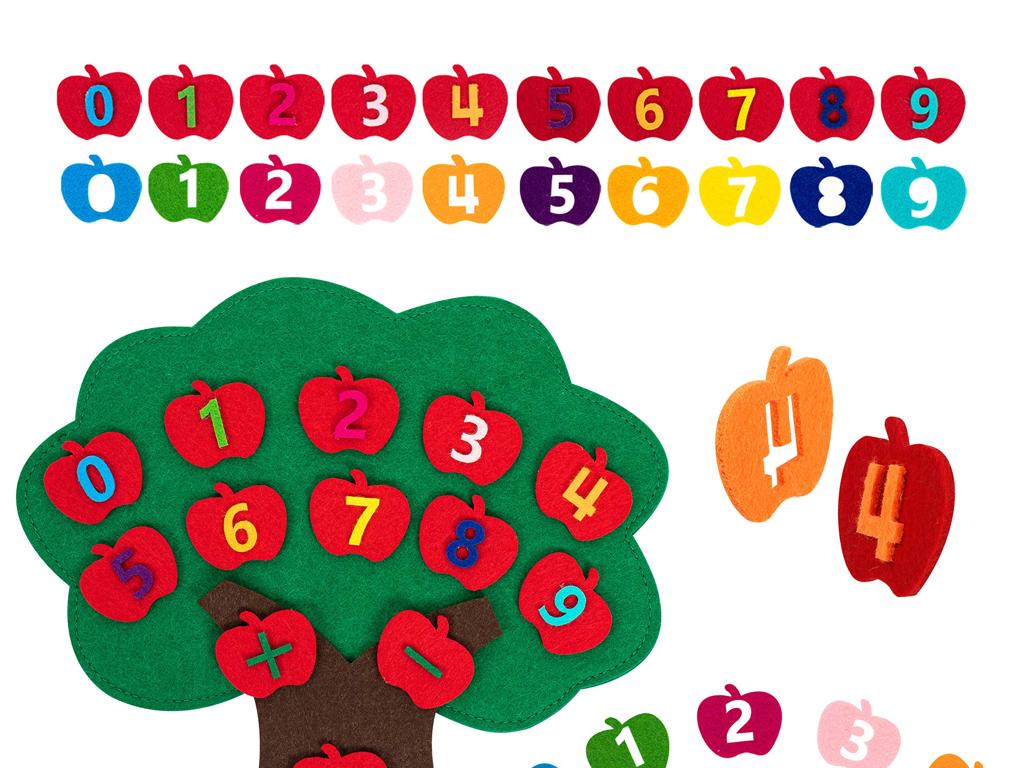Compare And Order Rational Numbers: Word Problems
Subject: Math
Grade: Sixth grade
Topic: Rational Numbers
Please LOG IN to download the presentation. Access is available to registered users only.
View More Content
Welcome to Rational Numbers
– Understanding rational numbers
– Numbers that can be expressed as a fraction
– Rational numbers in daily life
– Used in money, measurements, and time
– Today’s goal: comparison
– Learn to determine which is larger or smaller
– Ordering through word problems
– Solve problems by placing numbers in order
|
This slide introduces the concept of rational numbers, which are any numbers that can be expressed as the quotient or fraction of two integers. Students will see how these numbers are relevant in everyday contexts such as dealing with money, cooking measurements, and understanding time. The main objective for today’s lesson is to learn how to compare and order rational numbers by size using word problems. This skill is essential for understanding number lines, performing arithmetic operations, and solving real-world problems. Encourage students to think of situations where they have to make decisions based on quantities or measurements, and how comparing numbers helps in making those decisions.
Exploring Rational Numbers
– Define rational numbers
– Numbers that can be expressed as a fraction a/b, where a and b are integers and b is not zero.
– Examples vs. non-examples
– Examples: 1/2, 0.75; Non-examples: 2, À
– Rational numbers in daily life
– Money, measurements, and recipes often involve rational numbers.
– Practice with word problems
|
This slide introduces the concept of rational numbers to sixth-grade students. Begin with the definition, emphasizing that rational numbers include all fractions and decimals that can be written as fractions. Show clear examples of rational numbers and contrast them with non-examples like irrational numbers to solidify understanding. Relate the concept to everyday life by discussing how rational numbers are used in handling money, cooking, and measuring things. Conclude by explaining that word problems involving rational numbers help apply this knowledge in practical scenarios, preparing students for exercises they will encounter.
Comparing Rational Numbers
– Use a number line for comparison
– Place numbers on a number line to see which is larger or smaller
– Understand >, ‘ means greater than, ‘<' means less than, '=' means equal to
– Learn tips for quick comparisons
– Compare numerators for same denominators, and vice versa
|
This slide is aimed at helping sixth-grade students understand how to compare rational numbers using a number line and the symbols for greater than, less than, and equal to. Start by explaining the concept of a number line and how it can be used to visually compare the size of different numbers. Emphasize the meaning of the comparison symbols and how they are used to represent the relationship between numbers. Provide tips for quick comparison, such as looking at the numerators when the denominators are the same, and comparing denominators when the numerators are the same. Use word problems to apply these concepts in a practical way, ensuring students can interpret and solve problems involving the comparison of rational numbers.
Ordering Rational Numbers
– Steps to order rational numbers
– List numbers, find common form, compare sizes
– Ascending vs descending order
– Ascending: smallest to largest; Descending: largest to smallest
– Practice with an example
– Arrange 3/4, 7/8, 1/2 in ascending order
|
When teaching students to order rational numbers, start by explaining the steps involved in the process. First, ensure all numbers are in a common form (like converting to decimals or fractions with a common denominator). Then, compare the sizes of each number to determine their order. Clarify the difference between ascending (from smallest to largest) and descending order (from largest to smallest). Provide a practice example, such as arranging the fractions 3/4, 7/8, and 1/2 in ascending order, and guide students through the process. Encourage them to think about the size of the pieces the fractions represent to help them order the numbers correctly. This slide should give students a clear understanding of how to approach ordering rational numbers in different contexts.
Comparing Rational Numbers in Word Problems
– Read the problem carefully
– Understand the story and what is being asked.
– Spot the rational numbers
– Look for fractions, decimals, and whole numbers.
– Apply comparison strategies
– Use greater than, less than, or equal to signs.
– Solve and check your answer
– Ensure your solution makes sense in the context.
|
This slide is aimed at teaching students how to approach word problems involving the comparison of rational numbers. Start by reading the problem thoroughly to understand the context and what is being asked. Next, identify the rational numbers involved; these could be fractions, decimals, or whole numbers. Teach students various strategies for comparing these numbers, such as using number lines, converting to common denominators, or visual models. Encourage them to solve the problems and then check their answers to ensure they are reasonable within the context of the problem. Provide examples and practice problems to reinforce these skills.
Word Problems: Ordering Rational Numbers
– Determine event sequence
– Which event happened first? Use timelines for clarity.
– Apply ordering techniques
– Use number lines to compare and order numbers.
– Solve problems step by step
– Break down the problem, find each number’s place.
|
This slide is aimed at teaching students how to approach word problems that involve ordering rational numbers. Start by helping them understand how to determine the sequence of events in a story or problem. Introduce techniques such as using timelines and number lines to visually compare and order numbers. Emphasize the importance of solving problems step by step, breaking down each part of the problem to find where each number fits in the sequence. Encourage students to practice with real-world examples, such as organizing events in their day or scheduling activities. Provide guidance on how to translate a word problem into a mathematical representation using rational numbers.
Class Activity: Rational Number Race
– Split into teams for a challenge
– Solve word problems together
– Use clues in problems to find numbers
– Order your team’s rational numbers
– Compare and arrange numbers from least to greatest
– First to finish & explain wins!
– Explain your reasoning to the class
|
This activity is designed to encourage teamwork and apply knowledge of rational numbers in a competitive setting. Divide the class into small groups and provide each with a set of word problems involving rational numbers. Each team must work together to solve the problems and then sequence the resulting numbers. The first team to correctly order their numbers and explain their process to the class wins. As a teacher, prepare diverse problems of varying difficulty to cater to all skill levels. Possible activities include ordering fractions from a recipe, comparing distances, or arranging temperatures. Ensure that each team has a chance to explain their thinking to reinforce their understanding and communication skills.
Wrapping Up: Rational Numbers
– Recap: Comparing & Ordering
– Review key concepts: how to determine which rational numbers are greater or less.
– Mastery: Why It Matters
– Understanding these concepts is crucial for future math topics and real-life situations.
– Homework: Word Problems
– Complete the handout with various word problems to reinforce today’s lesson.
– Next Steps: Practice & Share
– Be prepared to discuss solutions and strategies in our next class.
|
As we conclude today’s lesson, it’s important to review the main points about comparing and ordering rational numbers. Emphasize the significance of mastering these skills, as they are foundational for understanding more complex mathematical concepts and are applicable in everyday life. For homework, students are given a handout with practice word problems to solidify their comprehension. Encourage them to attempt all problems and be ready to discuss their approaches and answers in the next class. This will not only help them retain the information but also enable them to learn from each other’s problem-solving strategies.






